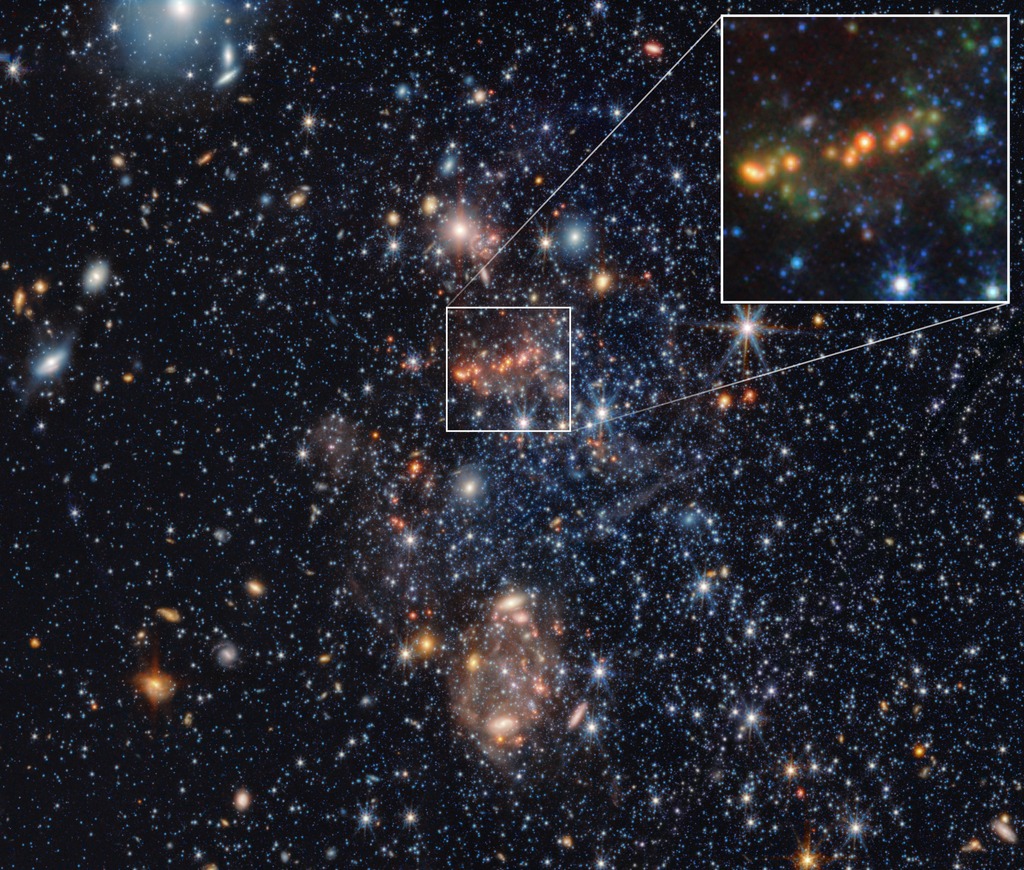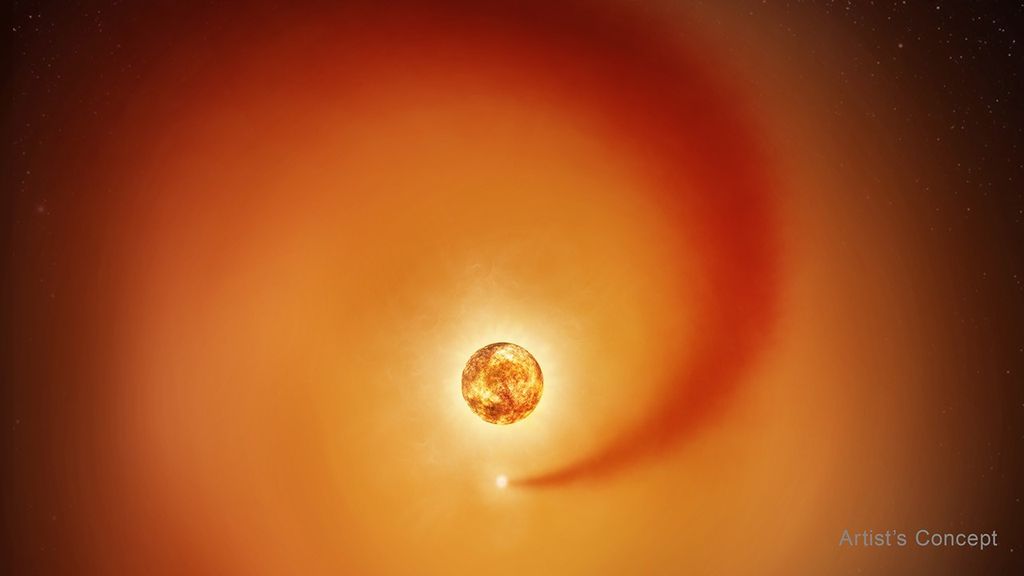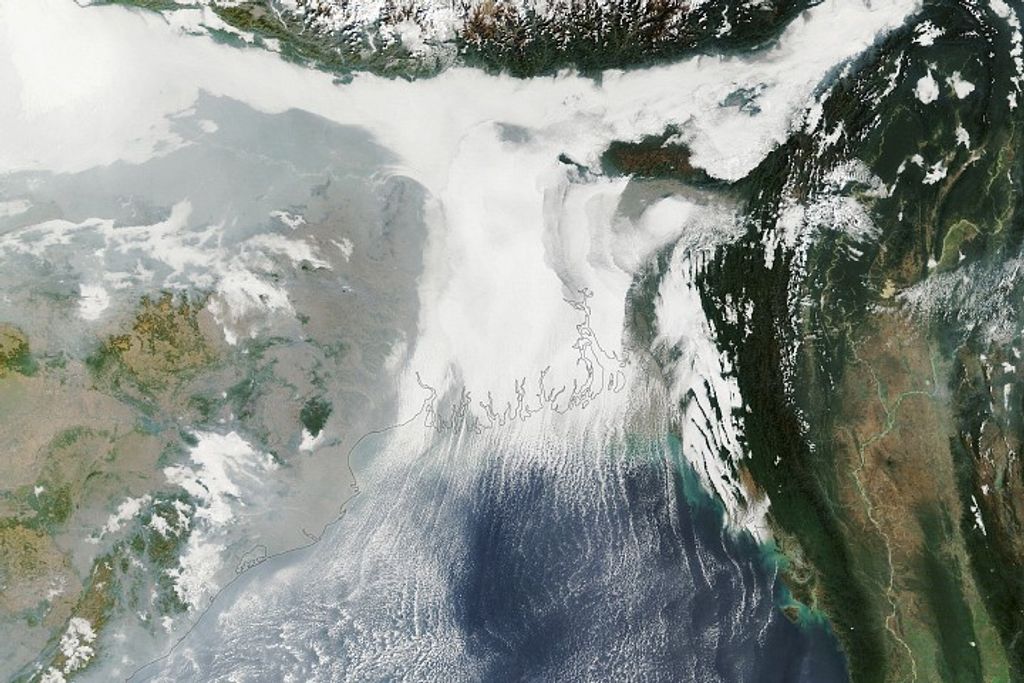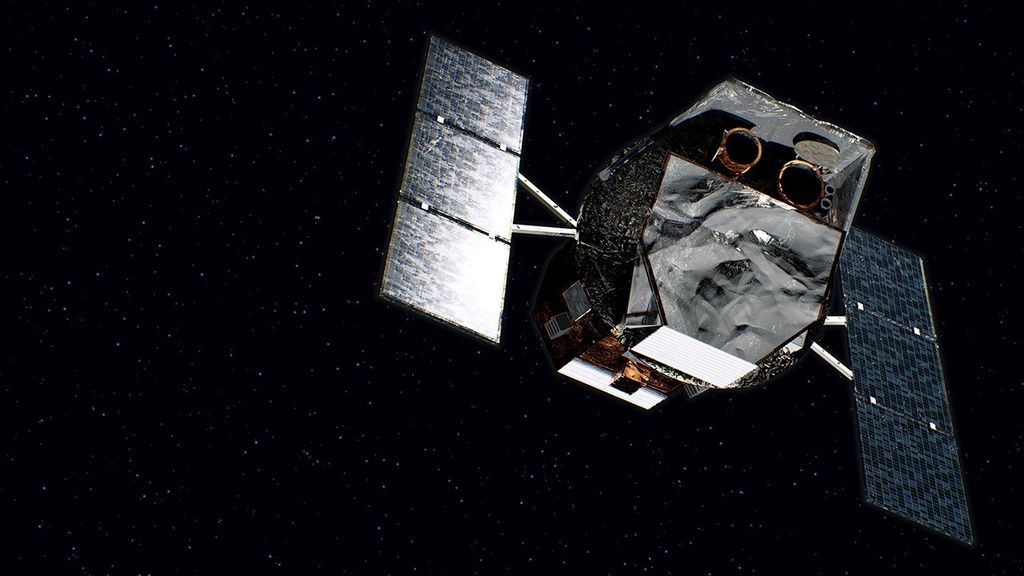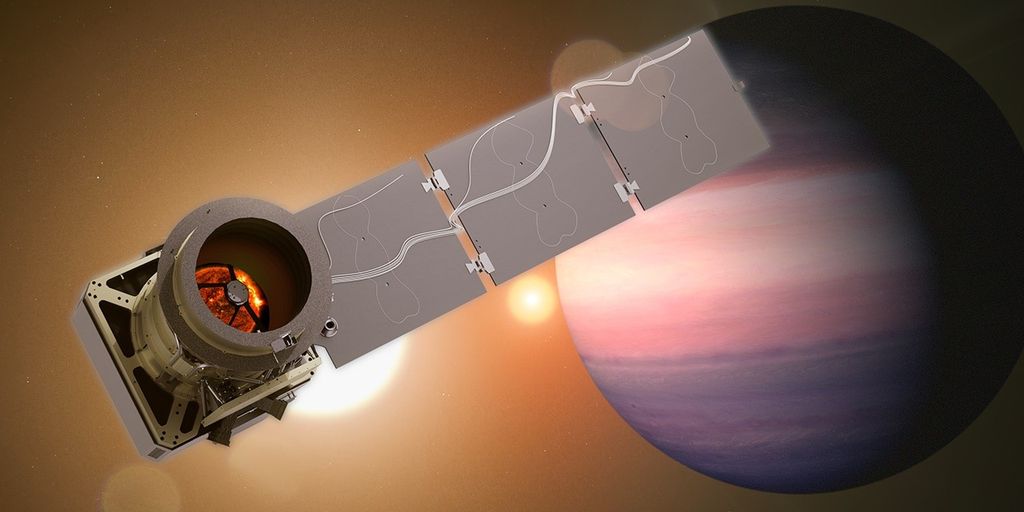1 min read
Trappist-1 e (Artist’s Concept)

The Earth-size exoplanet TRAPPIST-1 e, depicted at the lower right, is silhouetted as it passes in front of its flaring host star in this artist’s concept of the TRAPPIST-1 system. Scientists call this event a transit, when valuable data can be gathered as the exoplanet passes between the star and the telescope and starlight illuminates the atmosphere, if one is present. NASA’s James Webb Space Telescope has made initial observations of planets b, c, d, and e during their transits, with additional observations of planet e underway. While the star’s frequent flares make it difficult to detect an atmosphere, each transit builds up more and more information for scientists to get a more complete picture of these distant worlds.
- Release DateSeptember 8, 2025
- Science ReleaseNASA Webb Looks at Earth-Sized, Habitable-Zone Exoplanet TRAPPIST-1 e
- CreditArtwork: NASA, ESA, CSA, STScI, Joseph Olmsted (STScI)
Related Images & Videos

TRAPPIST-1 e Transmission Spectrum (NIRSpec)
This graphic compares data collected by Webb’s NIRSpec (Near-Infrared Spectrograph) with computer models of exoplanet TRAPPIST-1 e with (blue) and without (orange) an atmosphere. Narrow colored bands show the most likely locations of data points for each model.
Share
Details
Laura Betz
NASA’s Goddard Space Flight Center
Greenbelt, Maryland
laura.e.betz@nasa.gov

